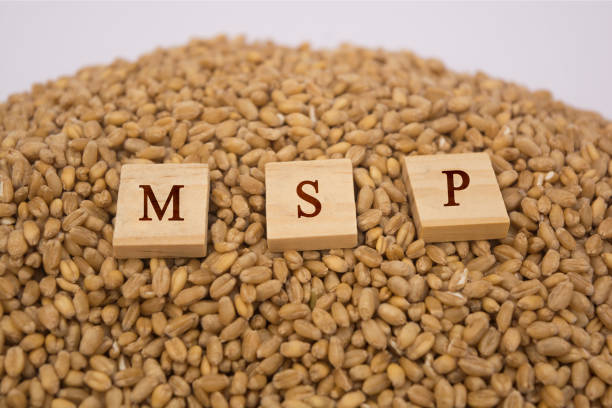
Agriculture in India is heavily dependent on seasonal cycles, with two main cropping seasons: Kharif and Rabi. Among these, the kharif crop season is particularly significant, as it coincides with the southwest monsoon and contributes a large share to the country’s total agricultural output. From rice and maize to cotton and soybeans, kharif crops form the backbone of India’s food and cash crop economy.
Understanding what constitutes a kharif crop, the optimal cultivation practices, and the challenges farmers face during the season can help improve yields, promote sustainable practices, and boost farm incomes.
What Is a Kharif Crop?
A kharif crop is one that is sown with the onset of the monsoon (usually around June) and harvested at the end of the monsoon season, typically in September or October. These crops require warm, wet weather for germination and early growth, followed by slightly cooler conditions for maturation.
Unlike rabi crops, which are cultivated in the winter months and depend more on irrigation, kharif crops rely primarily on rainfall. This makes monsoon patterns a critical factor in the success or failure of the kharif season.
Major Kharif Crops in India
India grows a wide variety of kharif crops, both food grains and commercial crops. Some of the key ones include:
- Paddy (Rice)
Rice is the most prominent kharif crop in India. It requires substantial rainfall and thrives in low-lying, water-retentive soils. - Maize (Corn)
Widely cultivated in states like Karnataka and Andhra Pradesh, maize is used for human consumption, livestock feed, and industrial products. - Millets (Jowar, Bajra, Ragi)
Drought-resistant and nutritious, millets are staple foods in several Indian regions and are gaining popularity for their health benefits. - Cotton
A major cash crop, cotton requires a long frost-free period and plenty of sunshine, making it ideal for the kharif season. - Soybean
Used for oil and protein extraction, soybean has become one of the fastest-growing kharif crops in terms of acreage. - Groundnut (Peanut)
Suited for well-drained sandy loam soils, groundnut is important for edible oil production. - Tur (Pigeon Pea)
A key pulse crop, tur is an excellent source of protein and fits well in crop rotation systems. - Sugarcane
Though technically a year-round crop, sugarcane is planted during the kharif season in many areas for higher yields.
Ideal Conditions for Kharif Crops
The success of a kharif crop depends on several environmental and agronomic factors:
- Rainfall: Most kharif crops require 500–1,000 mm of rainfall during their growth cycle.
- Temperature: Ideal temperatures range from 25°C to 35°C.
- Soil Type: Loamy, alluvial, and black soils are best suited depending on the crop.
- Sunlight: Adequate sunlight is essential for healthy plant development.
- Water Drainage: Proper field drainage is crucial to prevent waterlogging, especially in rice fields.
Kharif Crop Calendar
| Activity | Timeframe (Approx.) |
| Land Preparation | May to early June |
| Sowing/Transplanting | Mid-June to July |
| Growth Period | July to September |
| Flowering & Fruiting | August to September |
| Harvesting | Late September to October |
Regional Variations
Different regions in India have diverse kharif crop patterns due to varying climatic conditions and soil types:
- Punjab and Haryana: Predominantly paddy and cotton.
- Maharashtra: Cotton, soybeans, and jowar.
- Tamil Nadu and Andhra Pradesh: Paddy and groundnuts.
- Karnataka: Maize, tur, and ragi.
- West Bengal and Assam: Rice is the major kharif crop.
Challenges in Kharif Crop Cultivation
While the kharif season offers good growth conditions due to monsoons, it also comes with several risks:
- Irregular Monsoons: Late onset, early withdrawal, or erratic rainfall can disrupt sowing and reduce yields.
- Flooding and Waterlogging: Excessive rainfall can damage crops, especially in low-lying fields.
- Pest and Disease Outbreaks: Warm and humid conditions favor pest infestations like stem borers and fungal infections.
- Limited Irrigation Backup: Over-reliance on rainfall with inadequate irrigation facilities increases risk.
- Input Price Volatility: Rising costs of seeds, fertilizers, and pesticides reduce profit margins for small farmers.
Best Practices for Successful Kharif Crop Yields
To overcome the challenges of kharif farming, adopting modern agricultural practices is crucial:
- Use of Quality Seeds: Certified, high-yielding, and disease-resistant seed varieties ensure better crop performance.
- Timely Sowing: Align sowing with monsoon forecasts to maximize growing season.
- Soil Testing: Regular soil health assessments help in precise fertilizer application.
- Integrated Pest Management (IPM): Use biological controls and selective pesticides to manage pests sustainably.
- Water Management: Employ techniques like contour farming, mulching, and check dams to conserve moisture.
- Crop Insurance: Protect against crop loss due to weather variability through schemes like PMFBY (Pradhan Mantri Fasal Bima Yojana).
Government Support for Kharif Crops
The Indian government supports kharif crop cultivation through various schemes and subsidies:
- Minimum Support Price (MSP): Ensures fair pricing for key kharif crops like paddy, tur, and groundnut.
- Fertilizer Subsidies: Makes essential nutrients more affordable for farmers.
- Irrigation Projects: Initiatives like PMKSY (Pradhan Mantri Krishi Sinchayee Yojana) aim to improve water availability.
- Weather Advisory Services: Platforms like Kisan Suvidha and IMD provide localized forecasts to guide farming decisions.
Conclusion
The kharif crop season holds tremendous economic and social significance in India’s agrarian ecosystem. With the right mix of timely weather information, improved farming techniques, and institutional support, farmers can enhance yields and reduce the risks associated with monsoon-dependent agriculture.
As climate change makes monsoons more unpredictable, adapting kharif farming practices with resilience and technology will be the key to ensuring food security and farmer prosperity in the years to come. Understanding the dynamics of kharif crops is not just important for farmers but also for policymakers, agri-businesses, and consumers who rely on a steady food supply chain.






